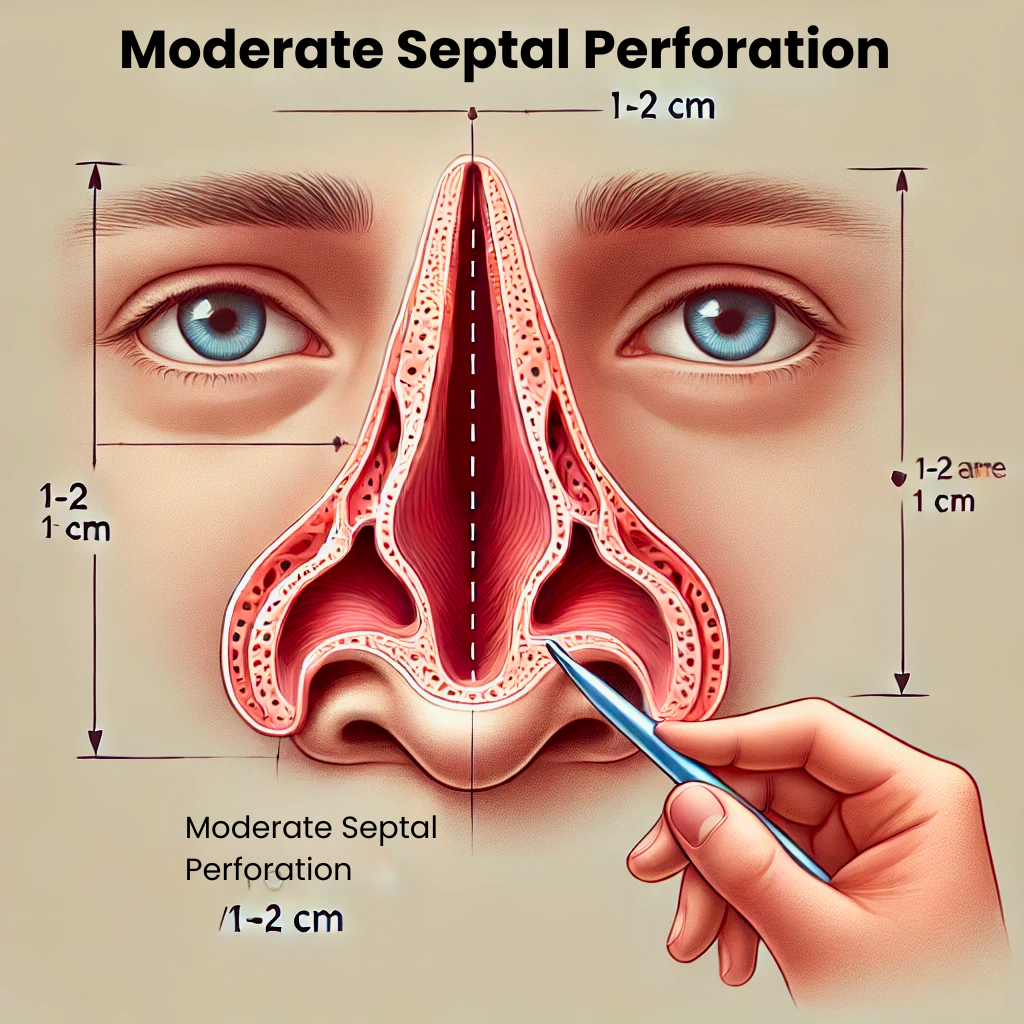
Effectively Addressing Septal Perforations
Addressing septal perforations is vital to prevent long-term complications. The approach to treatment varies based on the size of the perforation and the severity of the symptoms. In this article, we will explore different treatment options for various perforation sizes, helping you understand the best course of action.
Small Perforations (Less than 1 cm)
For small perforations, which are typically less than 1 cm, the focus is on maintaining mucosal health and preventing infections. Less invasive treatments are often manageable.
To begin with, increasing humidification plays a key role in promoting mucosal health. Humidified air helps keep the nasal passages moist, reducing dryness and irritation. Additionally, applying antibiotic ointments directly to the perforated area is crucial. This prevents infections, a common issue in septal perforations, by ensuring the nasal tissue remains protected.
Moreover, regular nasal irrigation helps cleanse the nasal cavity, alleviating symptoms and preventing crusting around the perforation. This treatment option works well for small perforations, keeping them clean and minimising discomfort.

Moderate Perforations (1-2 cm)
When the perforation is between 1 and 2 cm and symptoms become more pronounced, additional intervention is often needed. In these cases, a septal button can be highly effective.
A septal button serves multiple purposes. First and foremost, it covers the perforation, providing temporary relief from the symptoms. Many patients find this method useful as a non-surgical option, especially for short-term stabilisation. Depending on the patient’s tolerance, the septal button can be placed temporarily to prepare the nose for future surgical repair.
In addition to covering the perforation, the septal button supports the healing process of the surrounding nasal tissue. However, it is important to note that septal buttons are not a permanent solution, as many patients experience discomfort over time.

Large Perforations (Over 2 cm)
Non-surgical treatments like septal buttons are generally ineffective for perforations larger than 2 cm. These larger perforations require surgical repair to restore proper nasal function.
Due to the complexity of large perforations, surgery is typically recommended. By closing the perforation surgically, patients can regain normal breathing and alleviate symptoms such as nasal congestion and dryness. Although surgery is more invasive, it is the most reliable option for achieving long-term relief from the effects of large septal perforations.
You can check out this research article for further reading on various diagnostic methods related to septal perforation.

The Expert’s Recommendation
According to Mr Hassan Elhassan, a seasoned specialist in septal perforation treatment, septal buttons are often recommended as a temporary measure, regardless of perforation size. However, from his extensive experience, Mr Elhassan highlights that many patients struggle to tolerate septal buttons for extended periods. Issues like mucus build-up, rotation of the button, and movement within the nose often result in chronic irritation, leading to discomfort.
Therefore, Mr Elhassan strongly advocates for permanent surgical repair for optimal results. Surgery not only alleviates symptoms but also ensures that the perforation is fully closed and the nose’s structure is stabilised. His method boasts a success rate of over 99%, giving patients a reliable path to restoring normal nasal function and overall well-being.

Conclusion
Effectively treating septal perforations requires a tailored approach based on the perforation size and the severity of the symptoms. While small perforations can be managed with humidification, antibiotic ointments, and nasal irrigation, moderate ones may require a septal button. For large perforations, surgical repair is usually the most effective solution.
Ultimately, Mr Hassan Elhassan’s recommendation for permanent surgical repair offers the best long-term outcome. His proven techniques allow patients to regain comfort and quality of life.
Mr Hassan Elhassan
Published by Septalperforation.co.uk on August 30, 2024

Mr Hassan Elhassan is an experienced ENT consultant specialising in treating septal perforations. With expertise in both non-surgical and surgical options, he provides tailored patient care, ensuring effective and long-term relief from septal perforation symptoms. His approach is focused on restoring normal nasal function and improving overall quality of life.
